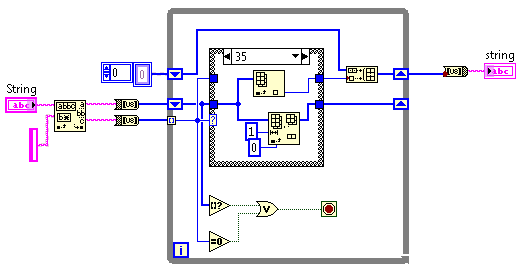줄 바꿈이없고 공백 ( ) 및 해시 ( #)를 포함하는 여러 줄 "금형"이 포함 된 인쇄 가능한 단일 ASCII 문자열이 제공 됩니다.
문자열에서 문자를 기준으로 문자를 이동 하고 문자열을 왼쪽에서 오른쪽 아래 순서로 사용하여 해시 를 대체해야 합니다 . 문자열이 금형을 채우기에 너무 짧은 경우 출력을 중지하고 문자열이 너무 길면 문자열을 잘라 금형을 정확하게 채 웁니다.
문자열 / 금형 예 (문자열이 너무 길거나 잘림) :
Loremipsumdolorsitamet,consecteturadipiscingelit.Namsuscipitmagnanoneratgravidacondimentum.Vestibulumnecnisllorem.Fuscemolestieviverranibh,eueleifendnislplaceratnon.Namblanditturpislacus,vitaemolestielacusimperdietquis.Nullapulvinar,exquissollicitudinfacilisis,eratnullavolutpatlectus,etluctusenimvelitegetex.Inhachabitasseplateadictumst.Donecinterdumnullalacinia,sodalesloremin,eleifendturpis.Pellentesqueanisimi.Aeneannonlobortisdiam,quisaliquetquam.Aeneanaugueipsum,imperdietsedaliquetnon,volutpategetsapien.Nullampharetranullaquispretiumornare.Aliquamfermentumvestibulummassavitaevehicula.
###########################################################
##### ############## ###### ###### ######################
##### ## ###### # ##### ###### ######## ######
###### # # #### #### ##### ###### ####### ###### #####
###### ### ### ##### ###### ####### ####### #####
###### ##### ### ########### ###### ####### ### ######
###### ###### ### ########## ###### ##### #########
################## #### ##########################
###########################################################
출력 예 :
Loremipsumdolorsitamet,consecteturadipiscingelit.Namsuscipi
tmagn anoneratgravid acondi mentum .Vestibulumnecnisllore
m.Fus ce molest i evive rranib h,euelei fendni
slplac e r atno n.Na mblan dittur pislacu s,vita emole
stiela cus imp erdie tquis. Nullapu lvinar, exqui
ssolli citud inf acilisis,er atnull avolutp atl ectus,
etluct usenim vel itegetex.I nhacha bitas seplatead
ictumst.Donecinter dumn ullalacinia,sodalesloremin
,eleifendturpis.Pellentesqueanisimi.Aeneannonlobortisdiam,q
문자열 / 몰드 예 (문자열이 너무 짧고 출력이 중지됨) :
This probably won't look good.
### ### ### ###
# # # # # #
### ### # # #
# # # # #
# # ### ###
해당 출력 :
Thi s p rob abl
y w o n '
t l ook g o
o d .
바이트 단위의 최단 코드가 이깁니다.

